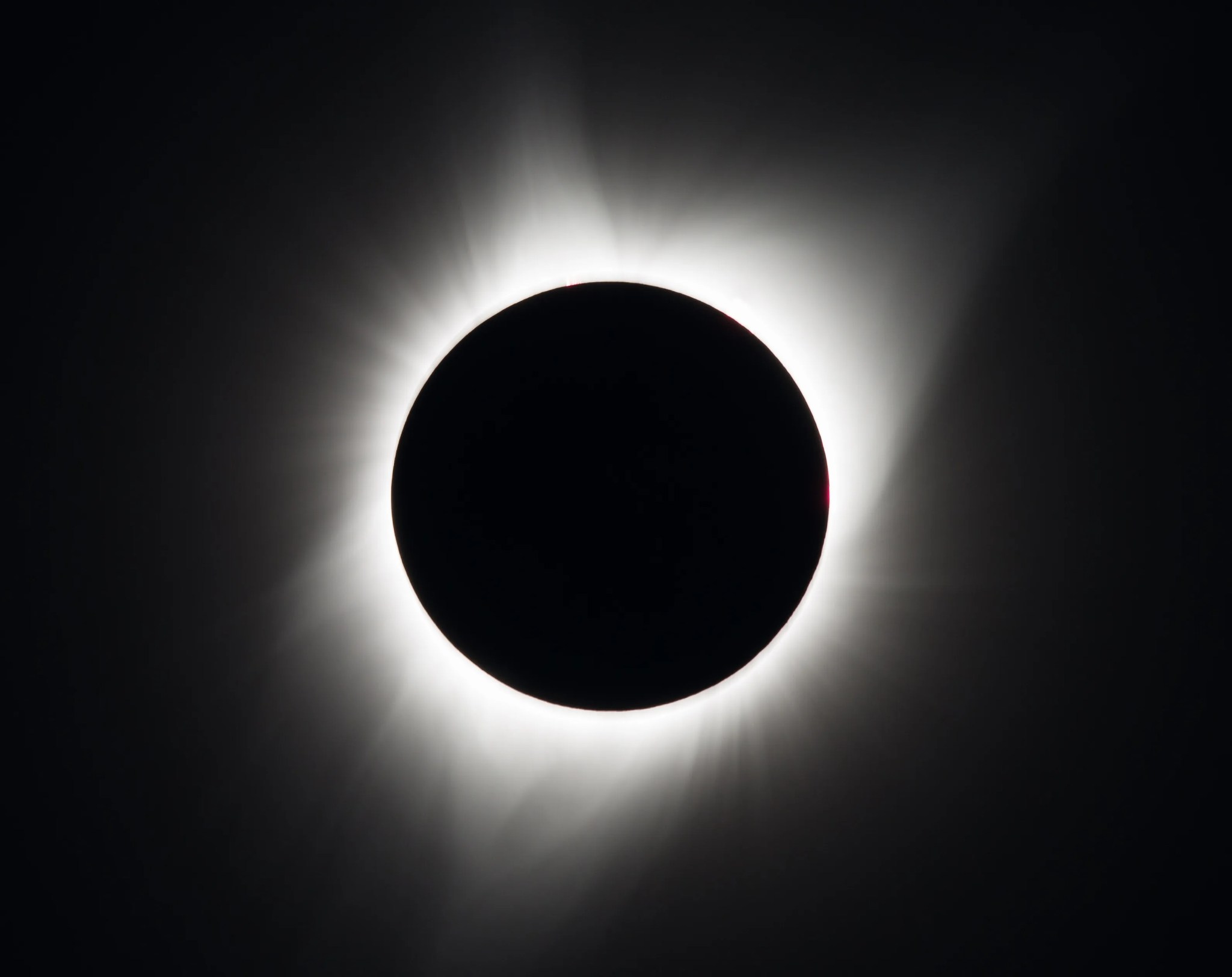Eclipse Photographers Will Help Study Sun During Its Disappearing Act
As the Sun temporarily disappears from midday skies over North America on April 8, 2024, hundreds of volunteers will capture photos of the total solar eclipse to help us better understand the Sun and its relationship with Earth. These photographers will be participating in three NASA-funded citizen science projects to study the Sun’s ghostly outer […]

5 min read
Eclipse Photographers Will Help Study Sun During Its Disappearing Act
As the Sun temporarily disappears from midday skies over North America on April 8, 2024, hundreds of volunteers will capture photos of the total solar eclipse to help us better understand the Sun and its relationship with Earth.
These photographers will be participating in three NASA-funded citizen science projects to study the Sun’s ghostly outer atmosphere – the corona – during totality, when the Moon completely covers the bright disk of the Sun and the corona is revealed.

The corona is the birthplace of the solar wind – a constant stream of particles and material flowing from the Sun that impacts Earth and other planets. The best time to see the full range of dynamics in the corona is during a total solar eclipse.
However, in any one location along April’s eclipse path, totality will last less than four and a half minutes – not long enough to watch the corona change. By staging observers all along the eclipse path, though, these NASA projects hope to essentially extend totality for over 90 minutes – the time it takes for the Moon’s shadow to cross from Mexico to Canada. Afterward, the projects will combine their images into “movies” revealing activity in the corona that would otherwise be hard to see.
Eclipse Megamovie
NASA/Lacey Young
Led by Laura Peticolas of Sonoma State University in California, the Eclipse Megamovie project is asking photographers to capture the corona using their own DSLR cameras on mounts that will track the Sun’s position in the sky during the eclipse.
The project has already selected and sent tracking mounts to over 70 individuals who will be stationed along the eclipse path in the U.S. and Mexico. Over 80 additional photographers who have their own DSLR cameras and tracking mounts and who plan to be in the Moon’s shadow on April 8 have also joined the project. Others are welcome to participate if they sign up by March 18.
“Citizen scientists are the perfect volunteers for this type of research,” Peticolas said. “They’re coming with their own cameras. They’re coming with the expertise on how to use those cameras. They’re coming with enthusiasm. And with this group of amazing volunteers, we’re going to get a dataset that is literally impossible to get in any other way.”
The project is also seeking volunteers with experience in databases, Python coding, and machine learning to help process the images and reveal hard-to-spot changes in the corona.
DEB Initiative
NASA/Beth Anthony
The Dynamic Eclipse Broadcast (DEB) Initiative, led by Bob Baer and Matt Penn of Southern Illinois University in Carbondale, has recruited 82 volunteer teams to image the eclipse from Mexico, the U.S., and Canada.
All teams, which range in size from a few people to as many as 30, have been selected and have received identical astrophotography equipment provided by the project. Many of them will be in the path of totality to capture views of the corona, but some will be outside the path, imaging the Sun itself.
“We’re looking at the evolution of the solar corona along the entire path,” Baer said. “And we’re also looking outside of the path of totality at the solar disk to connect the changes we see in the solar corona back to the surface of the Sun.”
During the eclipse, DEB teams will upload images of the partial phases every minute to the project’s image server, while some teams will also stream live video. During totality, teams in the path will collect images more rapidly, each contributing a single detailed image of the corona.
CATE 2024
NASA/Joy Ng
Led by Amir Caspi of the Southwest Research Institute in Colorado, the Citizen Continental-America Telescopic Eclipse (CATE) 2024 project will place 35 teams in the eclipse path from Texas to Maine to capture the corona in polarized light.
Light travels in waves, but those waves can be oriented in different directions, or polarization angles. Caspi explains that light we see from the corona is sunlight that gets bounced around by the corona before it reaches our eyes. “That bouncing process makes the light polarized and it makes it go in a particular direction,” he said. “By measuring that you can understand what’s going on in the corona.”
All of the CATE 2024 teams have been selected and have received identical telescopes, mounts, and cameras. Teams are currently practicing and receiving feedback in preparation for the eclipse.
To learn more about these projects or to sign up to participate, visit the websites below.
NASA Funds 3 Citizen Science Projects to Study 2024 U.S. Solar Eclipse
Eclipse Megamovie
DEB Initiative
CATE 2024
by Vanessa Thomas
NASA’s Goddard Space Flight Center, Greenbelt, Md.
Share
Details
Related Terms
What's Your Reaction?



















.jpg?#)








































